Best wireless microphones 2025: The finest untethered vocal devices
Free your performance with the best wireless mics from Røde, Shure, Sennheiser, AKG, Line 6, Behringer and Electro-Voice – plus our expert buying advice

1. The quick list
2. Best for legendary sound
3. Best for build quality
4. Best for ease of setup
5. Best for pros
6. Best for versatility
7. Best for small bands
8. Best on a budget
9. Best for expandability
10. Buying advice
11. How we choose products
“The most important kind of freedom is to be what you really are,” proclaimed the great Jim Morrison. Was he referring to wireless microphones? Probably not. But we’d like to imagine that the Lizard King would’ve been all over them if the technology had existed back then - and would therefore eagerly have devoured this guide to the best wireless microphones.
Jim was an incendiary presence live, igniting venues around the world with his wild stage antics. But imagine how much closer he could have been to his true self if he hadn't been tethered to the stage by a short, curly mic cable.
Freedom to express yourself - that's the real essence of wireless mics. Sure, they’re more convenient, prevent you from tripping your bandmates, and save your drummer’s kit from getting pulled apart every time you dash across the stage. But that's just the practical side.
We became musicians because, like Jim, we wanted to showcase our creative handiwork without boundaries. The whole world is a stage, so why confine ourselves to just 25 feet of it?
Wireless mics used to be cumbersome, noisy, and unreliable. Nowadays, however, even budget options offer quality that rivals their wired counterparts.
Many different recording microphones, including lapel lavaliers and specialist broadcast shotguns, can be paired with a wide array of receivers. To keep things simple, this buyer’s guide will be looking at the best receiver and wireless handheld mic kits, from cheaper options that are ideal for bands on a tight budget - like the Shure BLX288/PG58 bundle - right up to pro systems expandable enough to equip entire concert halls. Our top pick for this is the Electro-Voice RE3 ND96.
The quick list
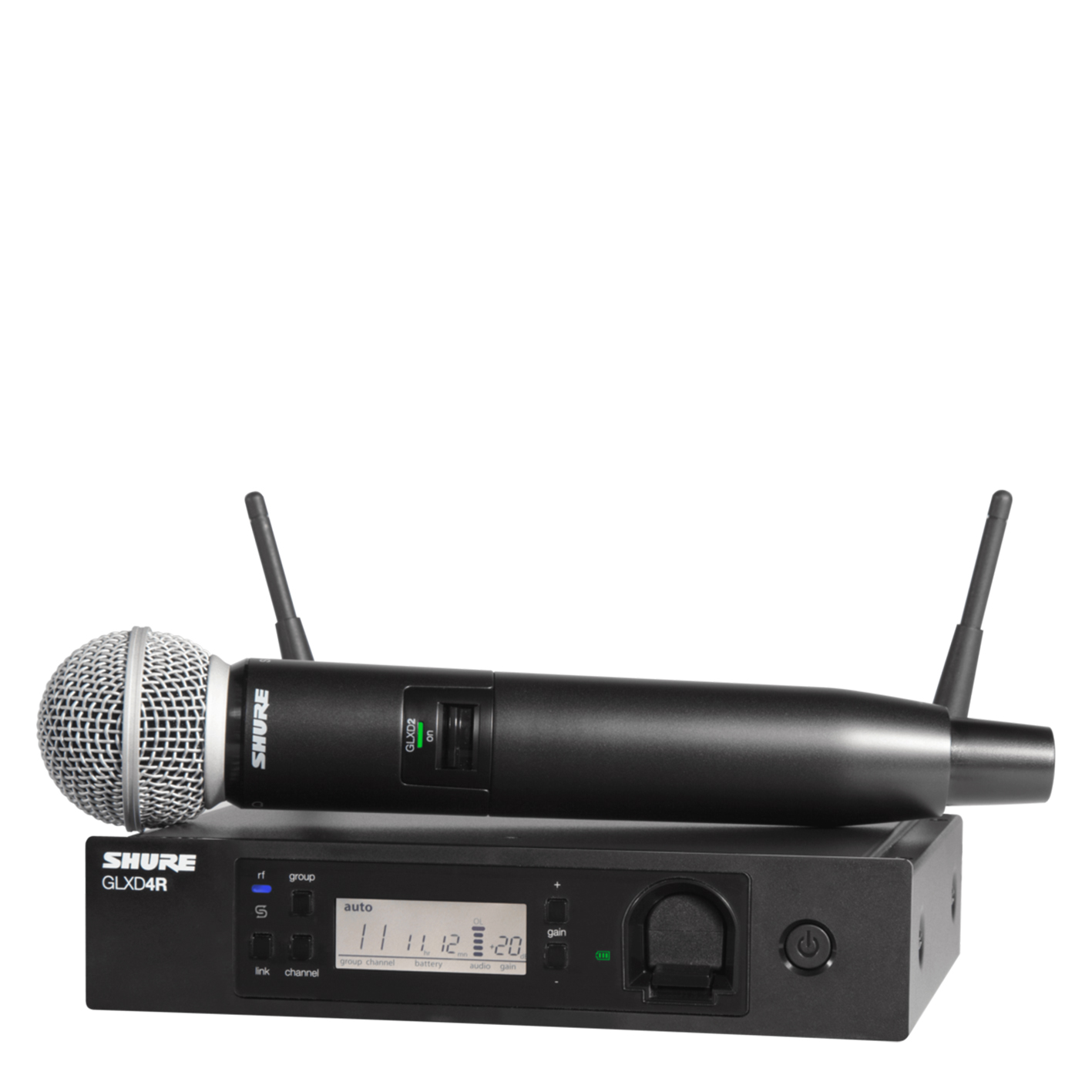
This kit forms part of Shure’s GLX-D Advanced ecosystem, which is where the US brand starts to get serious with its wireless products. The bundled mic capsule is from an SM58 – perhaps the most iconic live microphone of all time – so you can have total faith in the sound quality.
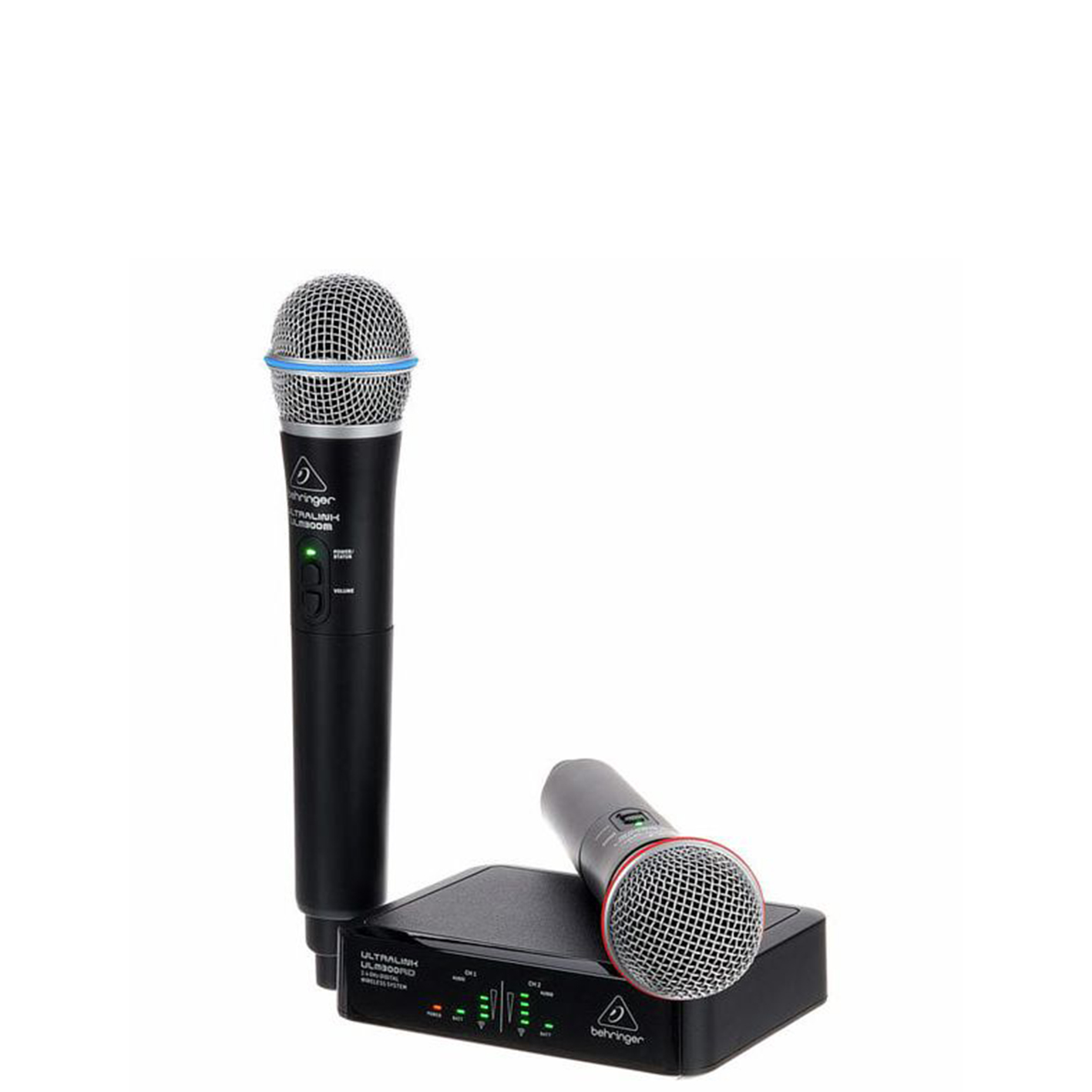
Behringer’s mantra is “double the features at half the price” – and it’s a slogan that fits this wireless kit perfectly. Double the features relates, of course, to the two microphones. And considering a single Shure SM58 mic – which is already outstanding value in our opinion – costs about the same as this whole setup, you’d have to say that Behringer has succeeded in its quest to halve the price.
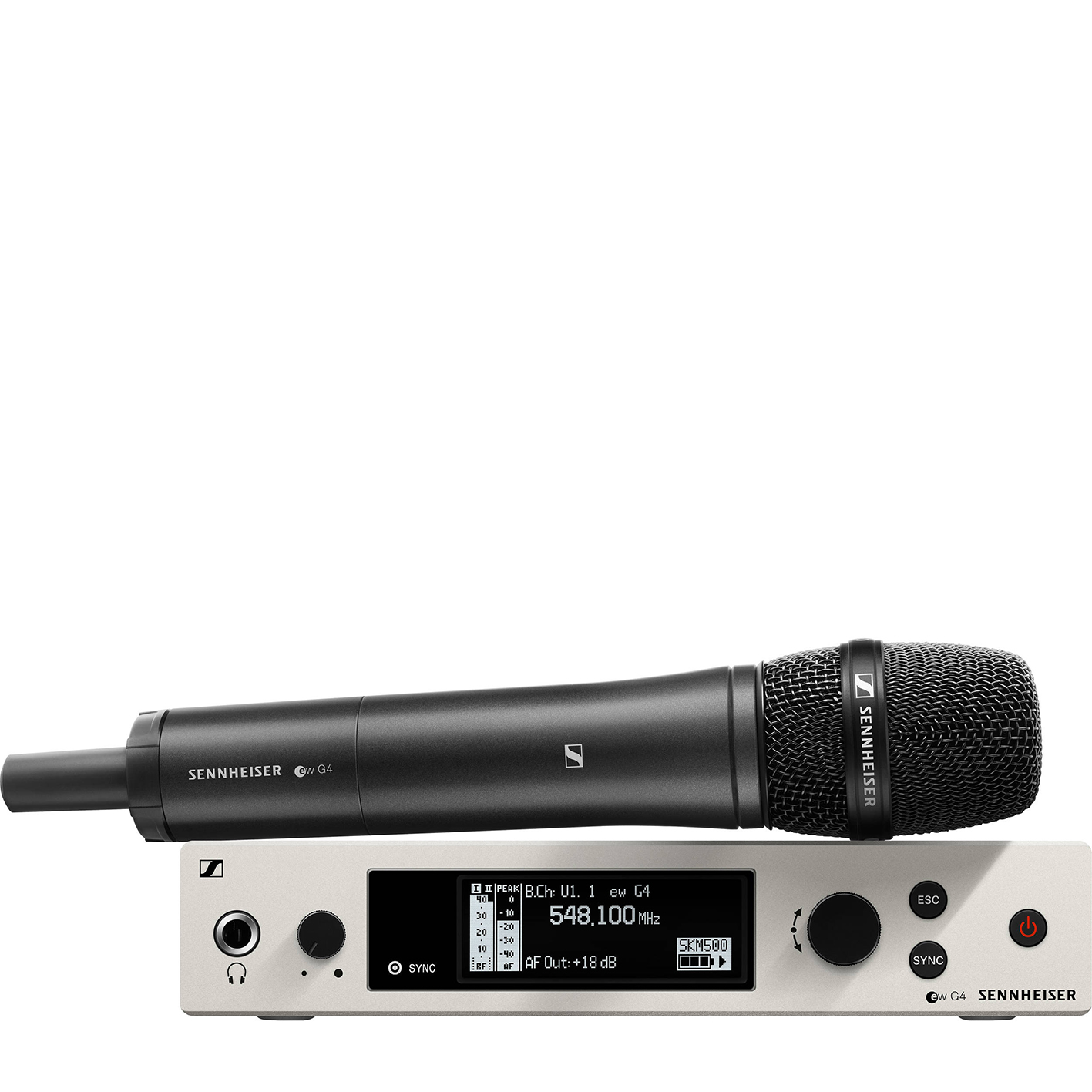
The EW 500 G4-935 is an excellent place to start if you want to buy into the Sennheiser's pro-level G4 architecture. This particular kit comprises an SKM 500 G4 handheld transmitter (the mic body) armed with a dynamic MMD 935-1 cardioid capsule. This capsule can be swapped out for any of the others in Sennheiser’s G4 range, whether that be a condenser or a supercardioid.

The RE3 range sticks with UHF over 2.4GHz because Electro-Voice believes it offers better reliability and scalability. It enables each receiver to boast eight groups of channels with up to 22 channels per group – enough for the kind of multi-channel system arrays you’ll find at festivals and large venues. The RE3-ND96 kit is bundled with a large-diaphragm ND96 supercardioid capsule that excels on loud stages and can handle exceptionally high gain before feeding back.

The BLX288/PG58 kit is unusual, and slightly pricey, because it’s bundled with two mics and a receiver that will handle them both simultaneously. If you’re after something a little cheaper, then the single-mic BLX24/PG58 costs just a smidgen over half as much and shares the same feature set. Of course, this means that if you absolutely need a two-mic setup then this kit is good value.
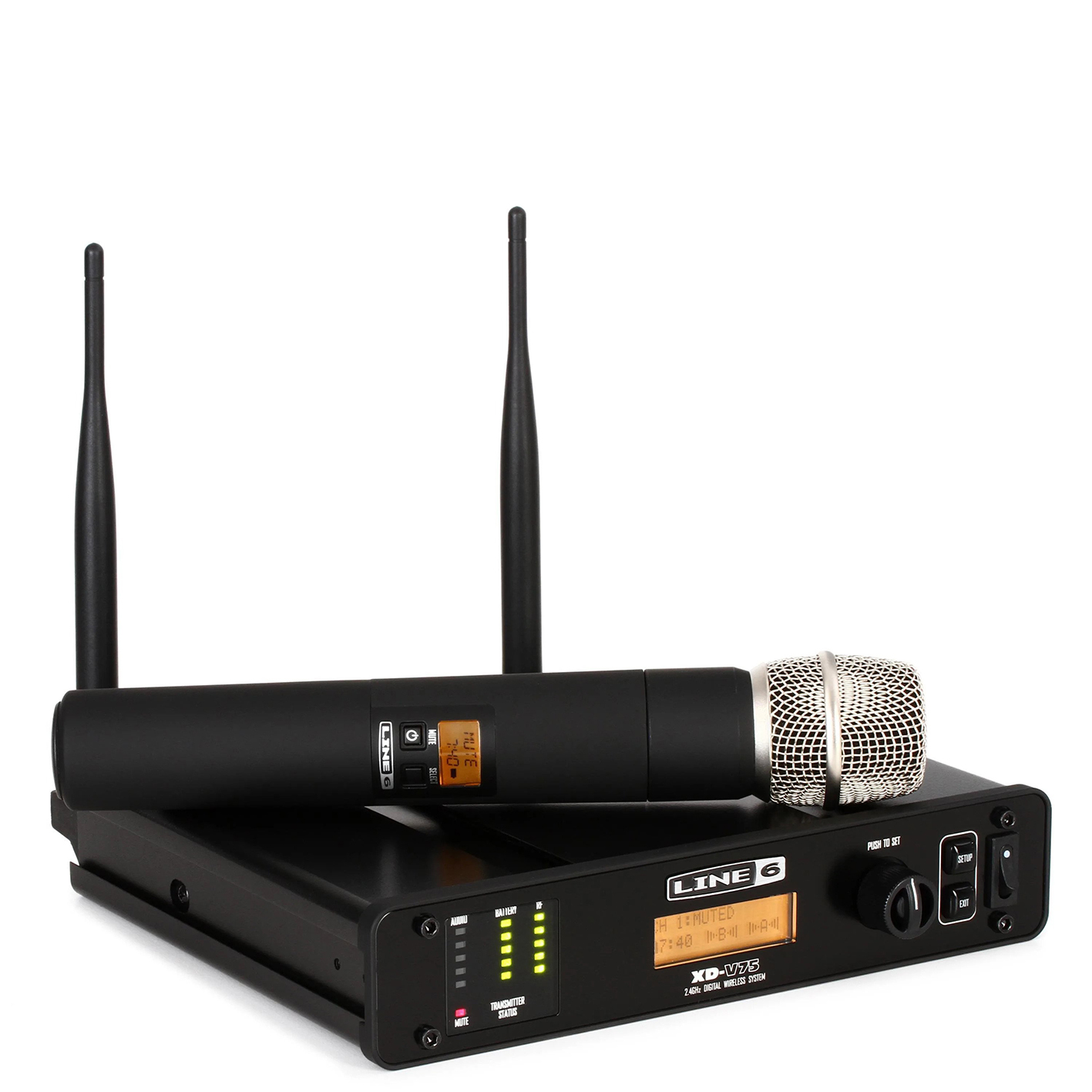
Line 6 is a pioneer of the modelling scene, so it’s no surprise that its wireless offering comes complete with a modelling mic. Need an SM58? You've got it. An AKG D5? That, too, plus another eight famous mics – or at least modelled versions of them – just waiting to be auditioned. The whole system can be rack-mounted for a tidy, easily transportable rig, too.
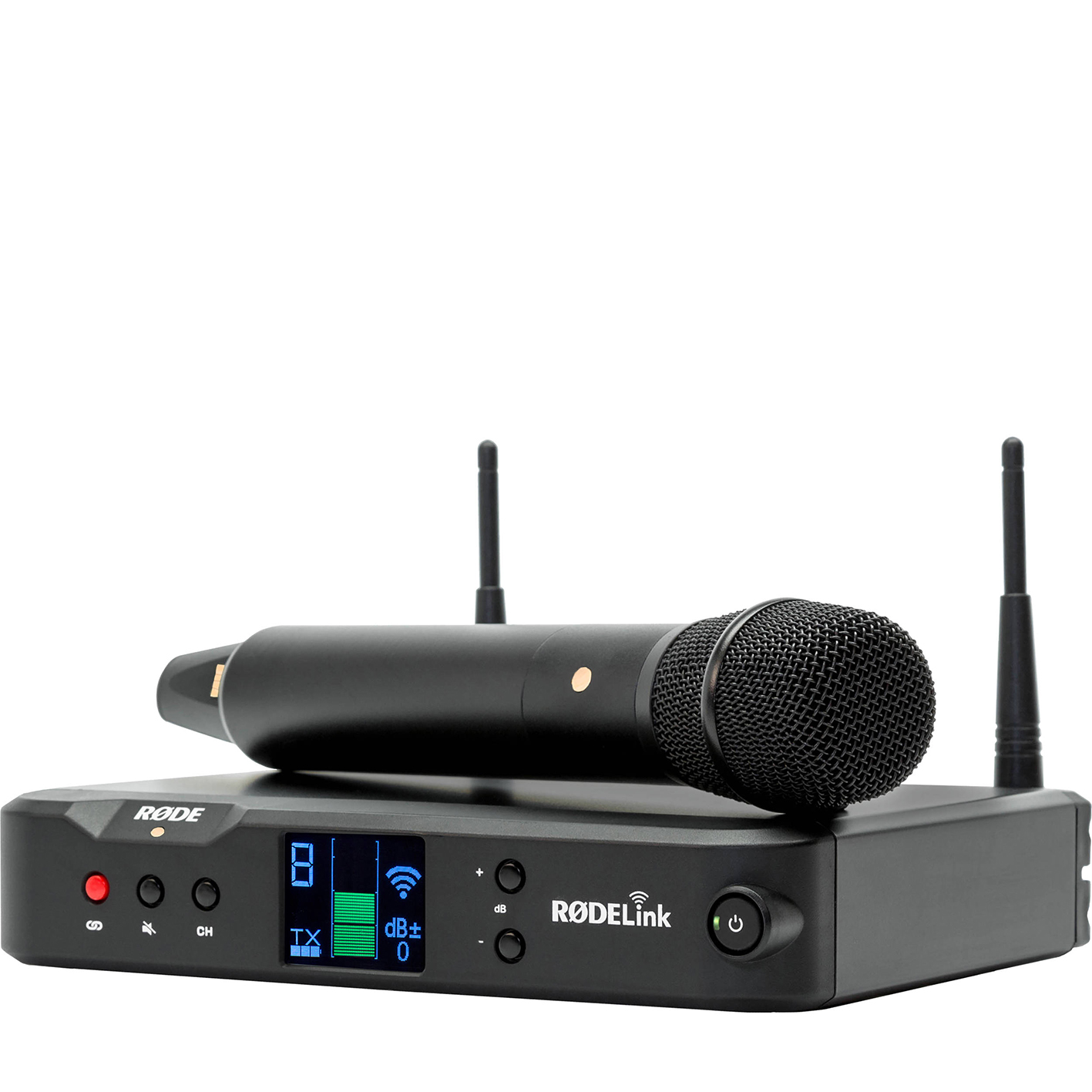
Bundled with the RØDELink Performer kit is Røde’s TX-M2 condenser mic and RX-DESK receiver. At this price point, it’s a surprise to find a quality condenser mic included for pristine, transparent sound reproduction. The metal casing feels reassuringly durable, handling noise is well suppressed by the internal shock mount, and its supercardioid pattern rejects any unwanted off-axis sounds. The TX-M2 can also be powered for up to 10 hours by the included lithium-ion battery.
Best overall
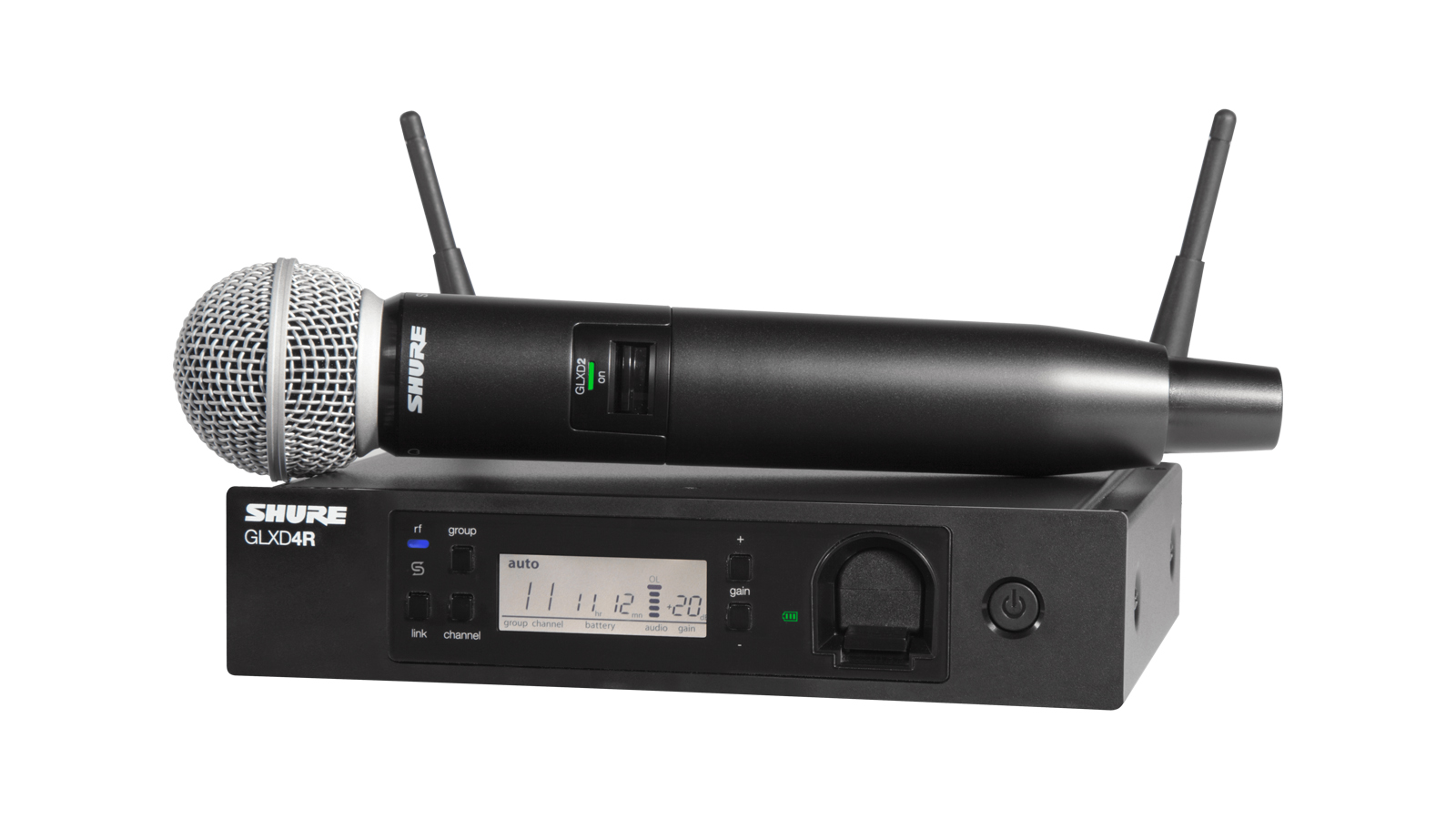
1. Shure GLXD24R/SM58
Our expert review:
Specifications
Reasons to buy
Reasons to avoid
This kit forms part of Shure’s GLX-D Advanced ecosystem, which is where the US brand starts to get serious with its wireless products. The bundled mic capsule is from an SM58 – perhaps the most iconic live microphone of all time – so you can have total faith in the sound quality.
The housing is molded ABS, which is fine, though it doesn’t have the substance of some of the mics reviewed here. It’s a discreet-looking unit with just an on/off switch and a multi-coloured battery-status LED breaking up its functional lines. Range is quoted at 30 metres and battery life is up to 16 hours using the supplied lithium-ion battery, which can be recharged via the tidy dock that’s accessed via the front panel of the GLXD4R receiver.
The GLXD4R is a neat-looking unit featuring an easy-to-read LCD screen that displays channel information, gain levels and remaining battery life. It’s well-built from cast metal, so should give years of reliable service, especially if mounted in a rack cabinet. There’s a one-touch button for auto setup, or you can enter a channel and gain settings manually.
So far, so good. But life without wires gets more rewarding if you hook the GLXD4R up to other products in Shure’s GLX-D Advanced ecosystem. Add a Frequency Manager and you can shove six receivers into a rack and manage them centrally. Add further Frequency Managers to up the receiver count by half a dozen at a time. This central management functionality is an absolute boon for busy stage managers and FOH engineers working in larger, more demanding venues.
Buy one kit safe in the knowledge that the 2.4GHz frequency won’t disappear at any time soon, and that you can grow your fledgling wireless setup into a larger system as demand increases and budget allows.
Best on a budget
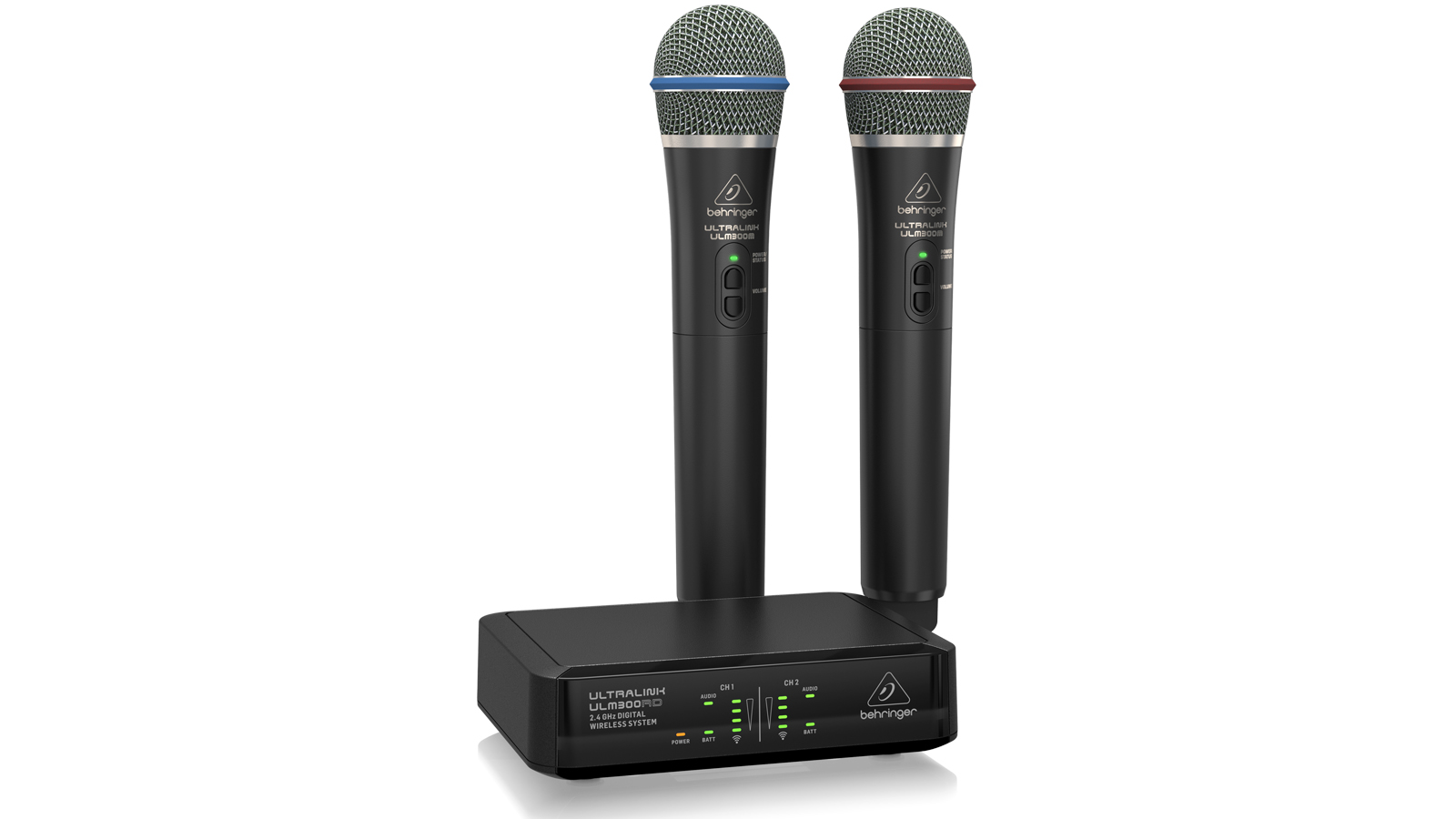
2. Behringer ULM302MIC
Our expert review:
Specifications
Reasons to buy
Reasons to avoid
Behringer’s mantra is “double the features at half the price” – and it’s a slogan that fits this wireless kit perfectly.
Double the features relates, of course, to the two microphones. And considering a single Shure SM58 mic – which is already outstanding value in our opinion – costs about the same as this whole setup, you’d have to say that Behringer has succeeded in its quest to halve the price.
Unsurprisingly, the ULM302MIC is not as feature-laden as rival products from the likes of Sennheiser and Shure. But if you’re on a tight budget, it does the job. The 2.4GHz operation is largely trouble-free, and digital transmission means there’s little intrusive interference or hiss – though feedback could be better tamed.
Setup is automatic and line-of-site range is an acceptable 200ft. It’s just a shame there’s no rechargeable battery included, because the cost of AAs can mount up.
Best for build quality
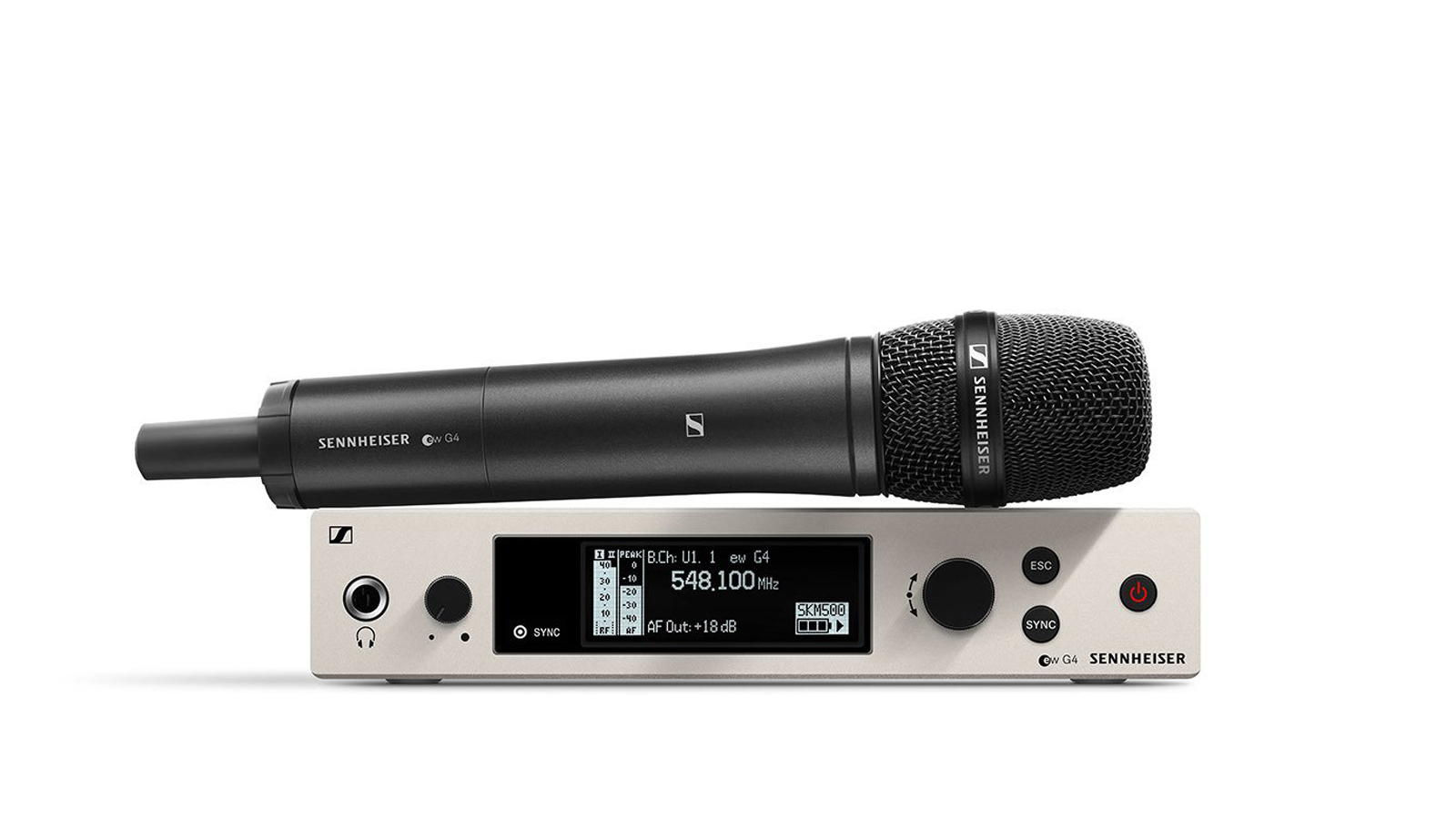
3. Sennheiser EW 500 G4-935
Our expert review:
Specifications
Reasons to buy
Reasons to avoid
Sennheiser is one of the most respected and trusted names in wireless mics. You’ll find its products everywhere that professional audio is a must – from theatres and concert halls to festivals and TV studios.
The EW 500 G4-935 is an excellent place to start if you want to buy into the manufacturer’s pro-level G4 architecture. Your initial investment will enable you to dip into its huge portfolio of mouth-watering accessories, which covers everything from headset mics to wireless guitar and bass packs.
This particular kit comprises an SKM 500 G4 handheld transmitter (the mic body) armed with a dynamic MMD 935-1 cardioid capsule. This capsule can be swapped out for any of the others in Sennheiser’s G4 range, whether that be a condenser or a supercardioid. Better still, because Sennheiser owns Neumann, you can even slap one of its condensers on for that legendary Neumann sound.
The EM 300-500 G4 rack-mountable receiver is a thing of beauty – especially its large, clear OLED display. It’s a powerful beast, too, one that can output RF signals at up to 50MW if local laws allow. You shouldn’t be lost for usable frequencies, either – with up to 88MHz of UHF on offer, there are 3,520 of them to play with.
The unit constantly polls both of its independent receivers, choosing the one with the strongest signal. This is way more advanced than units that just swap between two antennas, and guarantees exceptionally stable performance.
If you want to expand your wireless rig then the EM 300-500 hooks up to Sennheiser's Wireless System Manager software for advanced frequency coordination in multi-channel setups.
Best for pros
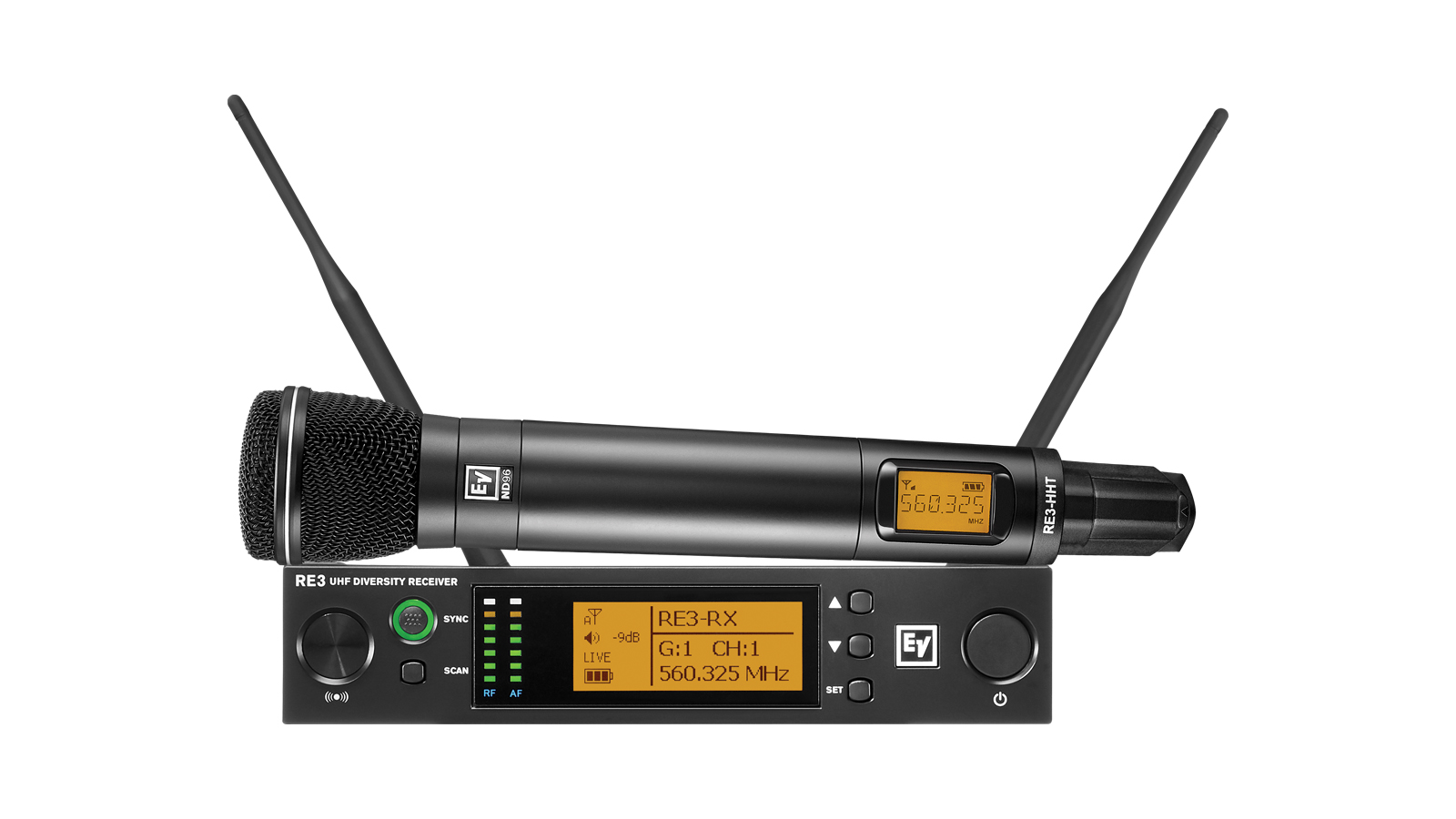
4. Electro-Voice RE3-ND96
Our expert review:
Specifications
Reasons to buy
Reasons to avoid
Electro-Voice specialises in sound systems for studio and stage, along with a range of drool-worthy microphones. It doesn’t do consumer stuff – its kit is purely for the pros.
The company’s RE3 range sticks with UHF over 2.4GHz because Electro-Voice believes it offers better reliability and scalability. It enables each receiver to boast eight groups of channels with up to 22 channels per group – enough for the kind of multi-channel system arrays you’ll find at festivals and large venues.
The RE3-ND96 kit is bundled with a large-diaphragm ND96 supercardioid capsule that excels on loud stages and can handle exceptionally high gain before feeding back. But there are four other Electro-Voice capsules to choose from, too, including condensers with cardioid or supercardioid patterns. Not forgetting the body packs, clip-on lavaliers, headset lavaliers, rack kits, instrument cables…
Despite the almost bewildering amount of choice, pros rate Electro-Voice because its products are easy to use. The RE3 receiver will auto-scan to select open frequencies, which can then be connected to the transmitter using its ultrasonic sync function. Unusually, even the transmitter features a large, easy-to-read LCD display that shows group and channel information, together with remaining battery strength. Whether your needs are modest or outrageous, the RE3-ND96 is worthy of your attention.
Best for small bands

5. Shure BLX288/PG58
Our expert review:
Specifications
Reasons to buy
Reasons to avoid
Shure’s BLX range is aimed squarely at the more accessible end of the market. The BLX288/PG58 kit is unusual, and slightly pricey, because it’s bundled with two mics and a receiver that will handle them both simultaneously. If you’re after something a little cheaper, then the single-mic BLX24/PG58 costs just a smidgen over half as much and shares the same feature set. Of course, this means that if you absolutely need a two-mic setup then this kit is good value.
The supplied mics are a pair of Shure’s PG58s, which sound great if not quite on a par with the iconic SM58 that comes bundled with the manufacturer’s more expensive wireless kits.
The BLX range operates on UHF, but setup couldn’t be much easier. Activate autoscan on the receiver, take a note of the group and channel that it recommends for best reception, and then duplicate this setting on the mic/transmitter. That’s it.
Few bands have only one vocalist – there’s usually at least one other member who’s called upon to sing harmonies and choruses. And, of course, genres such as hip-hop live or die by the quality of their vocal collabs. So, even though it costs a bit more, investing in a system with two mics may be a shrewd move.
Best for versatility

6. Line 6 XD V75
Our expert review:
Specifications
Reasons to buy
Reasons to avoid
Line 6 is a pioneer of the modelling scene, so it’s no surprise that its wireless offering comes complete with a modelling mic.
If you’re working with a number of vocalists, chances are that they won’t all be suited to the same microphone. Or perhaps you’re the only singer but you like the creative options that different microphones give. Problem is, cheaper wireless systems tend to come with only one mic, and if you don’t like it you have to lump it. Pricier systems are available with a choice of mic capsules, but buying a whole collection can get expensive.
The Line 6 XD V75 brushes these inconveniences aside with its ten mic models. Need an SM58? You've got it. An AKG D5? That, too, plus another eight famous mics – or at least modelled versions of them – just waiting to be auditioned. Line 6 will even sell you two additional capsules – the Relay V75-SC and the V75-40V – that bring supercardioid and hypercardioid patterns to the game. The V75-40V is a bit special, too, because it was co-developed by the mic maestros at Earthworks Audio.
The receiver is an interesting bit of kit. Line-of-sight range is 300ft, and there are 14 channels to choose from, which also means that it’s possible to run 14 XD V75s or Line 6 Relay products simultaneously. The whole lot can be rack-mounted for a tidy, easily transportable rig.
Best for expandability
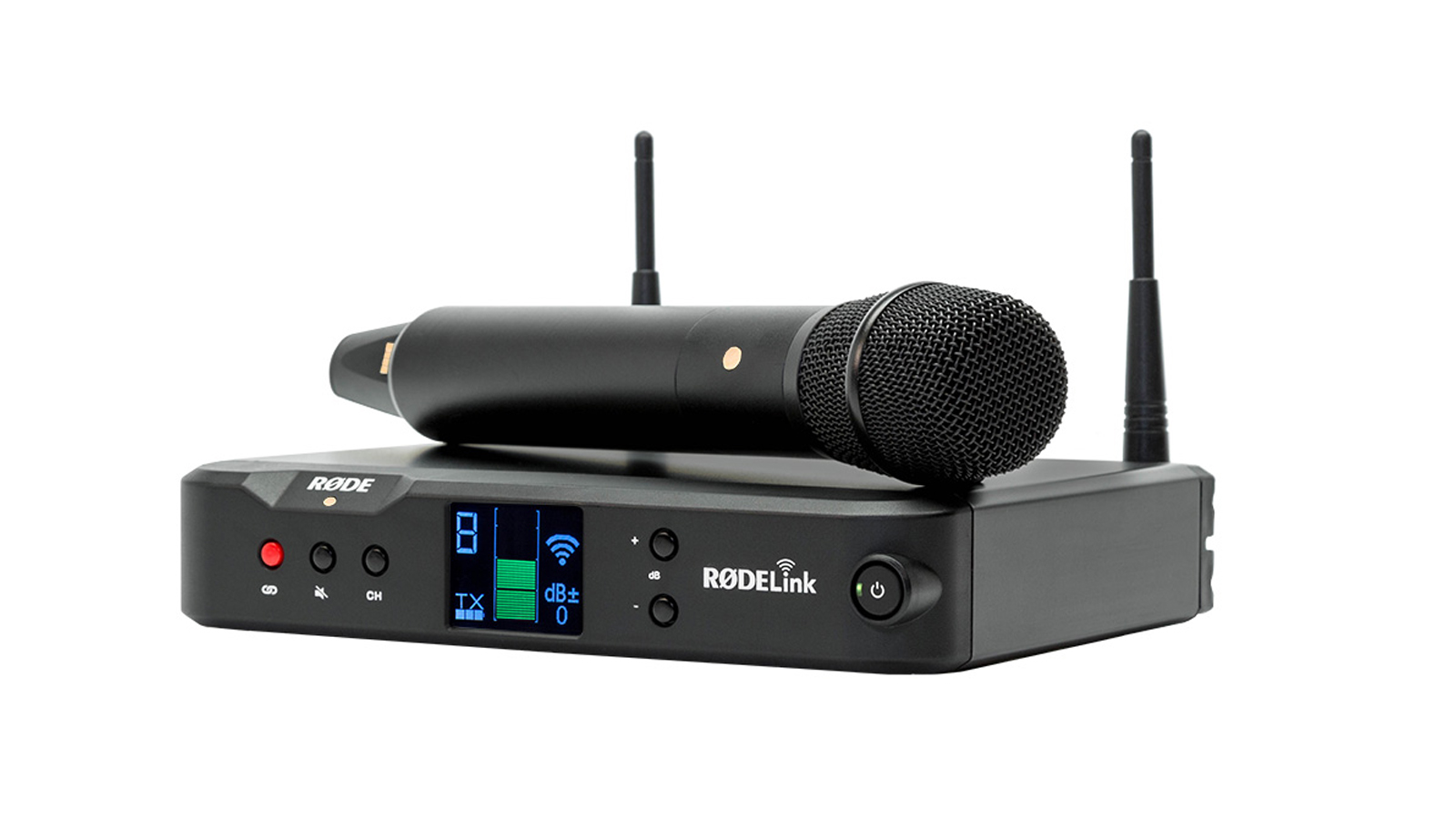
7. Røde RØDELink Performer Kit
Our expert review:
Specifications
Reasons to buy
Reasons to avoid
Bundled with the RØDELink Performer kit is Røde’s TX-M2 condenser mic and RX-DESK receiver. At this price point, it’s a surprise to find a quality condenser mic included for pristine, transparent sound reproduction. The metal casing feels reassuringly durable, handling noise is well suppressed by the internal shock mount, and its supercardioid pattern rejects any unwanted off-axis sounds. The TX-M2 can be powered for up to 10 hours by the included lithium-ion battery, but you can replace this with two AAs if you prefer.
The RX-DESK receiver uses an encrypted 2.4GHz signal on two simultaneous channels, automatically favouring the one with the strongest signal. Maximum range is a very impressive 300ft, and pairing is as simple as pressing a soft-touch button. Once up and running, a small digital display keeps you up-to-date with signal status, peak warnings and remaining battery life.
This is a fairly simple kit that’s an absolute breeze to set up. It may appeal to those who want a one-touch solution for smaller productions, but should your needs grow, you can use up to eight kits simultaneously.
Buying advice

What's the difference between a condenser and dynamic mic?
These wireless microphone systems will be bundled with one or more condenser or dynamic mics - but which suits you best?
Condenser mics have a broad frequency response, capturing detailed sound that is often warm and rich with some top-end sparkle. Their pleasing character flatters most vocalists, making them staple in studio recordings. However, their sensitivity to every little noise can be a drawback on chaotic, loud stages. They are also relatively fragile and expensive.
By comparison, dynamic mics hone in on capturing the mid-range. While they lack the detail of condensers, they deliver the core essence of a performance and aim to reduce noisy distractions. They are also tough as nails and more affordable.
Generally speaking, more refined vocalists or those performing on quieter stages will love the dynamics and subtleties that a condenser mic can bring, while more exuberant performers are better suited to dynamic mics.
Some of the wireless mic kits featured here have replaceable capsules that enable you to switch between condenser and dynamic mics on the fly along with various polar patterns.
What are polar patterns?
Microphones designed for live typically use one of three polar patterns: cardioid, supercardioid or hypercardioid. In layman’s terms, these patterns restrict the pickup area in front of the mic to tight, very tight or tighter than a gnat’s... well, you get the picture.
Cardioid and supercardioid are popular for stage use because they reject off-axis sounds, such as other instruments or singers surrounding the vocalist. This helps focus the mic’s pickup on the intended sound source while minimizing background noise.
Hypercardioid mics take rejection of background noise a step further, but they do rely on the vocalist singing directly into the mic from a close distance. If not, the vocalist's voice will be excluded too!
Choosing the right polar pattern depends on your specific needs and environment, but all three offer benefits that enhance live performance by accentuating the sound you want to capture and minimizing the noise you don’t.
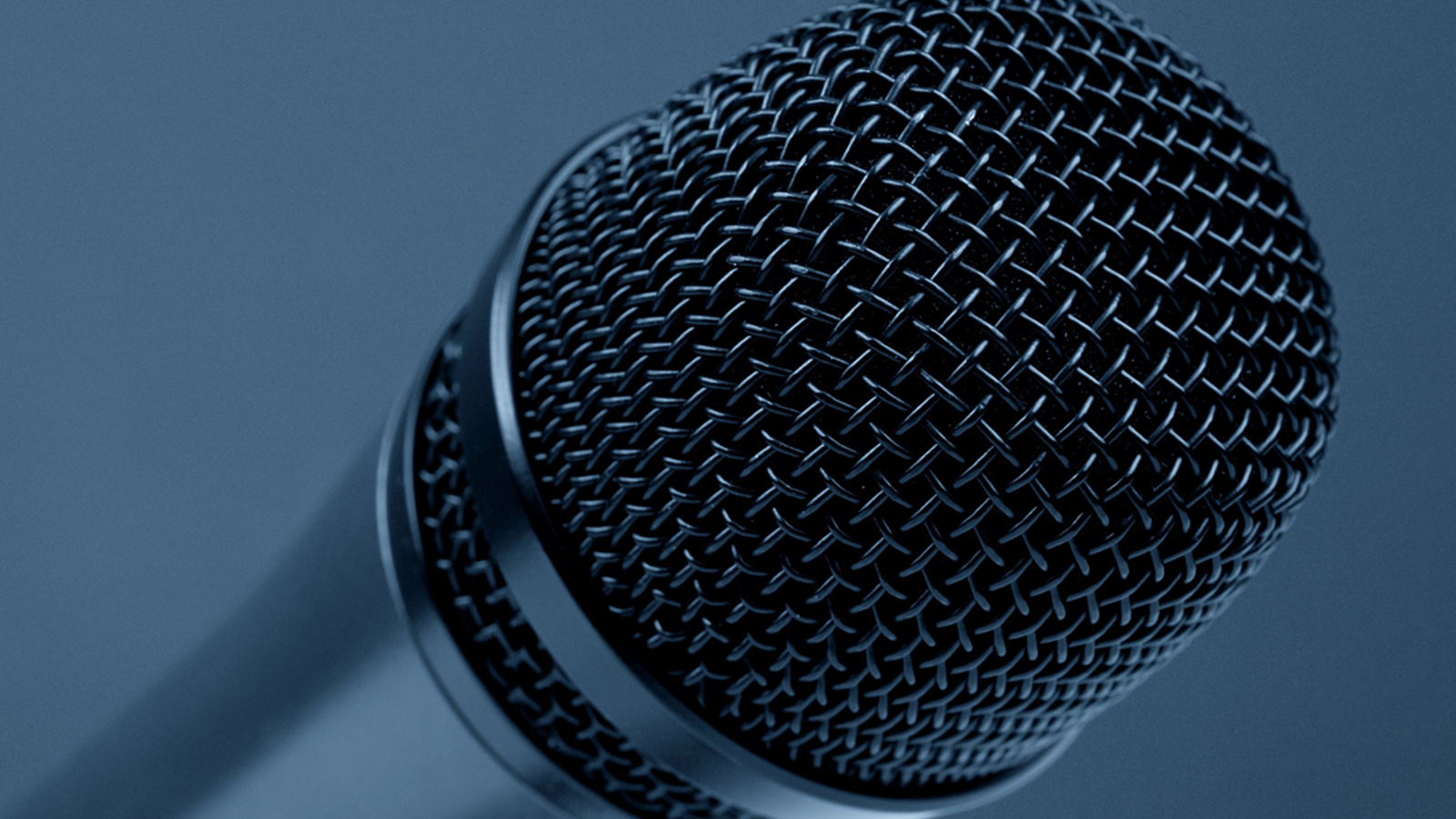
Everything you need to know about frequencies
MusicRadar's got your back
Wireless microphones - like mobile phones, remote-controlled toys and Bluetooth devices, operate using radio frequencies. Some frequencies are unsuitable for wireless mics due to excessive interference or the need for huge antennas. In a nutshell, the VHF (Very High Frequency) and UHF (Ultra High Frequency) spectrums offer a sweet spot for wireless microphones.
Unfortunately, these same frequencies are also covered by mobile phone companies and digital television broadcasters. Over recent decades, governments worldwide have swiftly auctioned off large portions of the radio frequency spectrum to the highest bidders.
Additionally, certain frequencies are off-limits because they are reserved for the military or emergency services.
There’s no single global body that regulates which frequencies can legally be used for wireless microphones, leaving it up to individual governments to decide. This has significant implications for those looking to buy a wireless system, especially for touring.
Don’t be tempted to buy older units at prices that are ‘too good to be true’, either, unless you really know what you’re doing.
Wireless mic systems are designed to transmit and receive on a limited number of frequencies, so brands often sell variants of the same kit tailored for local markets. For example, a UK unit will be set up to operate on certain frequencies, while a US unit may use entirely different ones. In fact, it’s also common to find multiple model variants within the same market, as some frequencies require licenses while others are license-free. Users often have preferences for certain parts of the spectrum due to operational reasons.
Touring from one country to another with a single system could get complicated very quickly. Different countries have different frequency regulations, making it challenging to ensure compliance. The only exception is units that operate on 2.4GHz, which is generally accepted worldwide.
Therefore, avoid the temptation to buy older units at prices that are too-good-to-be-true unless you’re aware of their legal status. Governments have a habit of periodically reallocating the spectrum, making older units not just obsolete but illegal. Rest assured, all modern systems from reputable dealers should be legal for the foreseeable future.
Now that all the scary legal stuff is out of the way, let’s take a quick look at which parts of the available spectrum might be best for your needs.
VHF vs UHF vs 2.4GHz
The VHF frequency range spans from 49 and 216MHz, though our focus lies in the higher end, starting from 169MHz and upwards. This range is optimal for wireless microphone systems due to its excellent audio quality, minimal transmission losses, manageable antenna sizes and tolerable interference levels. Wireless systems operating within this spectrum will function reliably even beyond line-of-sight.
Stepping up to the 300MHz range brings us into the realm of UHF, where dynamic range becomes even better. Many countries experience less congestion in this part of the spectrum, allowing for the simultaneous operation of multiple systems - aiding setups in larger locations such as concert halls and festivals. However, shorter UHF radio waves struggle to penetrate walls, furniture, bodies and metal, often needing line-of-sight transmission and compromising range.
If 2.4GHz sounds familiar to you, it’s because your Bluetooth devices and Wi-Fi network operate on the same frequency.
So, opt for VHF if you need good quality over a decent range and don’t need to run multiple systems at once. Go for UHF when managing multiple wireless mics, you need excellent quality and not stretching transmission distances too far.
What about 2.4GHz? First, the good news - and it’s a biggie. Wireless microphone systems that operate on 2.4GHz are legal in almost every country worldwide. Phew!
But there are drawbacks. If 2.4GHz rings a bell, it’s because your Bluetooth devices and Wi-Fi network also operate on this frequency. It’s a very crowded space, often leading to dropouts and noise. Its effective range is limited to shorter distances and it can be tricky to find enough available channels to set up multiple devices.
Though there are definite upsides. 2.4GHz systems are a breeze to set up, usually offer great value for money and will never suffer obsolescence at the hands of a greedy politician. If you want an easy-to-use system for small venues or you’re part of a touring band, then 2.4Ghz is the way to go.

Digital vs analogue
Let’s cut to the chase - all things considered, we lean towards digital. But only just, and analogue still comes with its own advantages.
What sets them apart? A wireless system works by using a microphone to pick up your voice and convert it into an electrical signal. Then a transmitter - either within the mic body or a body pack - converts this electrical signal into an RF signal and broadcasts it to a receiver. It’s the receiver’s job to convert the RF signal back into an electrical signal and route it to an amp, mixing desk or PA. That final conversion can be achieved via a digital or analogue process.
Analogue systems can yield excellent results, but there is a risk of introducing artifacts due to how the signal is compressed between the transmitter and receiver. On the other hand, digital systems convert the signal using binary code, ensuring pristine quality, especially with higher sample rates and bit rates (typically 24-bit/48kHz and above). While digital conversion once introduced significant delays, modern high-quality systems experience minimal latency.
The bottom line is that both processes can deliver superb outcomes, but digital currently has the edge.
How we choose the best wireless microphones for this guide
Here at MusicRadar, our core team and the freelance writers who contribute to the site are experts in their field, with many years of playing, creating and product testing between them in many specialist areas, from recording, to live performance and everything in between. We live and breathe everything music gear-related, and we draw on this knowledge and experience of using products in live, recording and rehearsal scenarios when selecting the products for our buyer's guides.
When choosing what we believe to be the best wireless microphones on the market for this guide, we combine our hands-on experience, user reviews and testimonies and engage in lengthy discussions with our editorial colleagues to reach a consensus about the top products in any given category. Our combined years of experience means we can give accurate and expert perspectives on the products we consider.
First and foremost, we are musicians, and we want other players to find the right product for their creative pursuits. So we take into careful consideration everything from budget to feature set, ease of use and durability to come up with our top picks.
Click to read more about how we test music gear and services at MusicRadar.
Related buyer's guides
- Best live vocal microphones: the finest gigging mics you can buy today
- Best budget microphones: budget mics for the studio or stage
Want all the hottest music and gear news, reviews, deals, features and more, direct to your inbox? Sign up here.
When Simon's childhood classical guitar teacher boasted he 'enjoyed a challenge', the poor man had no idea how much he'd underestimated the scale of the task ahead. Despite Simon's lack of talent, the experience did spark a lifelong passion for music. His classical guitar was discarded for an electric, then a room full of electrics before Simon discovered the joys of keys. Against all odds, Simon somehow managed to blag a career as a fashion journalist, but he's now more suitably employed writing for MusicRadar and Guitar World. When not writing or playing, he can be found terrifying himself on his mountain bike.
